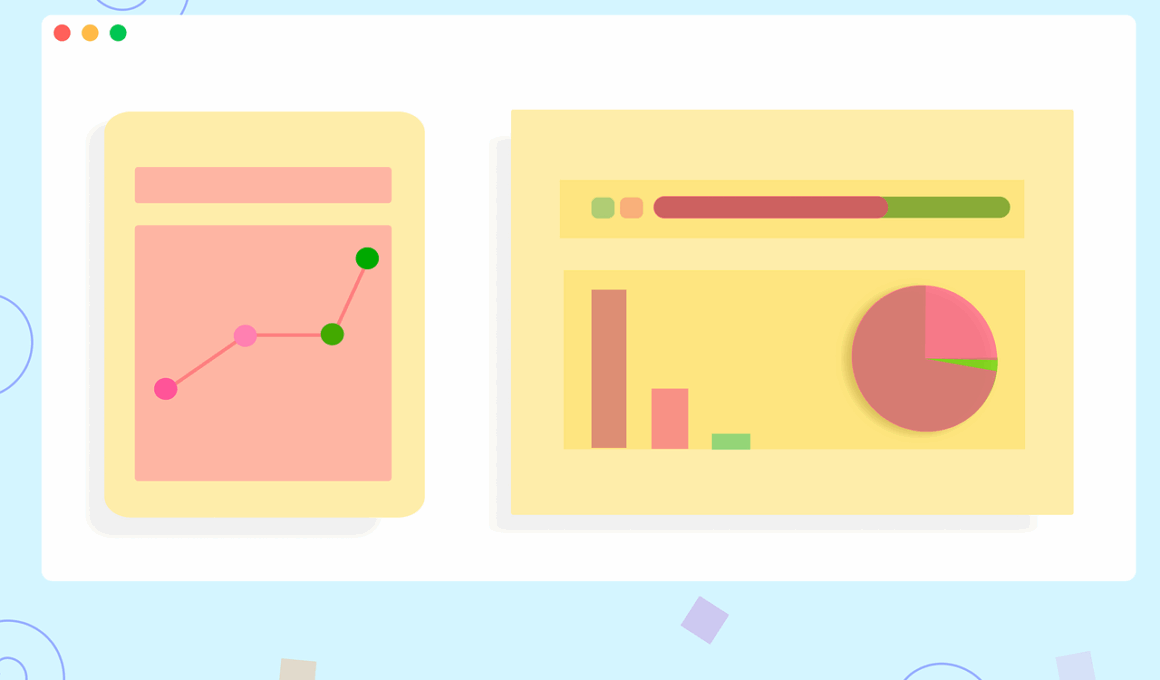Using Data and Statistics to Strengthen Your Grant Application
Grant applications often require substantial justification and data to support each request for funds or resources. Using data and statistics effectively can greatly improve your application’s chances of success. Firstly, it is vital to identify the relevant data sources related to your project’s goals. Consider utilizing government databases, academic studies, or local community research to gather information. Next, collect quantitative data that supports your objectives, such as demographic statistics, economic forecasts, or relevant health indicators. Analyzing and presenting this data with clear visuals, such as graphs and charts, can also be beneficial. Incorporating strong visual representations can grab the attention of reviewers. Additionally, provide qualitative data in the form of testimonials or case studies. Share stories that illustrate how past projects have made a significant impact. Always ensure your data is up-to-date and credible. Cite all of your sources appropriately. Lastly, remember to align the statistical data with your grant’s purpose and narrative to create a compelling story that engages reviewers.
The Importance of Effective Data Analysis
In every grant application, effective data analysis plays a critical role in creating a persuasive case for funding. By extracting key insights from your data, you can identify trends, needs, and opportunities. This analysis can highlight the significance of your project in addressing specific community challenges or needs. Begin by using statistical software or tools to analyze the data you’ve collected. Identify patterns that can underscore why your project is essential. Ensure that your findings are presented clearly and concisely. Summarize complex metrics in a way that is easily digestible for reviewers, avoiding jargon or overly technical language. Furthermore, create segmented reports to dive deeper into various aspects of your project’s impact. Presenting a clear narrative that connects your data insights with your project goals will resonate more with the review committee. Moreover, consider including a summary section that outlines the key takeaways from your data analysis, illustrating how these insights lead to your funding request. This will help reviewers understand the value of investing in your proposed initiative.
Besides primary data collection, secondary data can also substantially enhance your grant application. Utilizing existing research, reports, or white papers can validate your project’s relevance and urgency. Search for studies that closely relate to your field of work or the specific outcomes you plan to achieve. You can draw comparisons between your initiative and established research findings, illustrating the need for funding deeply. For instance, if you are applying for health-related grants, utilize national health statistics that reveal pressing issues in your focus area. By doing this, you’re not only providing context for your project but also backing up your claims with irrefutable evidence. Ensure to reference these secondary sources accurately, as credible sources strengthen your application significantly. Include an impact statement derived from this analysis, portraying how your project can fill the identified gaps. Address potential returns on investment for the funders by showcasing your project’s prospective impacts based on these statistics. Showing the alignment with funders’ goals through statistical evidence can greatly enhance your chances of approval.
Crafting Your Narrative Using Data
Data alone may not capture the attention of reviewers; thus, crafting a compelling narrative is essential for creating a meaningful grant application. Consider how storytelling can be intertwined with data to make it more relatable and compelling. Start by summarizing your project’s objectives, emphasizing how they align with the funder’s interests. Following this, weave in the data you have gathered to support each claim. Both qualitative and quantitative data should complement, not overshadow, your narrative. Use descriptive language to paint a picture of the challenges you seek to address through your project. For example, if statistics show high rates of school dropouts, share a story about specific students who have faced these challenges. By pairing factual data with real-life examples, you create a more impactful message that resonates emotionally with reviewers. Moreover, conclude your narrative by reiterating how funding will contribute to addressing the issues outlined, reinforced by the insights derived from your data.
Collaborating with data experts or statisticians can significantly enhance the quality of your grant application. These professionals can offer insights into the proper methodologies for data analysis and help ensure your application is robust. They can also assist you in interpreting complex datasets and explain how to derive actionable insights tailored to your project goals. This collaboration can be particularly beneficial in ensuring rigorous evaluation methods, which can further validate your application. Accessing their expertise may not only refine your data presentation but also enhance your narrative by integrating sophisticated analyses. Furthermore, consider reaching out to local universities or nonprofit organizations that may have resources for supporting grant applications. Often times, students in relevant fields are looking for hands-on experience that could aid in your project development while enhancing their education. Establishing symbiotic relationships like this can improve the quality of your proposal while fostering community collaboration. Always recognize and credit these partnerships in your application, highlighting how collaborative efforts strengthen the project’s foundation and implementation.
Utilizing Technology for Data Management
In today’s digital age, technology plays a vital role in managing and presenting data effectively within grant applications. Various tools are available that enable you to gather, organize, and analyze data effortlessly, ensuring your application is both efficient and effective. Consider using data visualization software to create informative charts, graphs, and infographics that clearly present key statistics. This facilitates a rapid understanding of your information by reviewers, which may sway their decision in your favor. Programs like Tableau or Google Data Studio can be excellent resources for this purpose. Additionally, employing project management tools can help you track objectives and associated metrics throughout your grant implementation process. Demonstrating how data informs every step of your project enhances legitimacy. Invest time in training on these platforms, ensuring you can maximize their potential. Moreover, remember the importance of data security and privacy. Ensure that any sensitive data you collect is stored securely, adhering to best practices in data governance, thus demonstrating your commitment to ethical data management.
Lastly, continuously iterating and enhancing your data strategies as part of your grant application process is crucial. After submitting your application, seek feedback on both your data presentation and overall narrative. This feedback can come from peers, mentors, or even previous grant recipients who have navigated the process successfully. Utilize this insight to adjust and improve future applications. Additionally, ensure continuous learning by staying abreast of developments in data methodologies and visualization techniques relevant to your field. Attending workshops or enrolling in online courses can provide you with fresh perspectives and innovative ways to leverage data in your narratives. Always aim for excellence in every application by not only meeting but exceeding expectations regarding data utilization. In doing so, you demonstrate both professionalism and a commitment to the impactful work of your project. Success in grant applications often hinges on clarity and persuasiveness, so invest the necessary time and effort in presenting your data in the best possible way.
In summary, using data and statistics effectively can make a significant difference in the strength of your grant application. From supporting your project goals to crafting impactful narratives, the integration of data is crucial. Be sure to collect both primary and secondary data, analyze it carefully, and present it visually to enhance understanding. Collaborating with proficient data experts can substantially improve your application’s credibility. Don’t underestimate the role of technology in managing and presenting your data effectively. Remain dedicated to ongoing improvements based on feedback and industry developments continually. Achieving success in grant applications is a blend of comprehensive research, compelling storytelling, and robust data utilization. Each element strengthens your case for funding, which can become the key differentiator in competitive grantworthiness. Ultimately, making a compelling case for your project with grounded, factual data not only showcases the need for support but can also pave the way for entirely new opportunities. Following this multifaceted approach can help you prepare very competitive grant proposals that reflect both community needs and innovative solutions.


